It looks like you're using an Ad Blocker.
Please white-list or disable AboveTopSecret.com in your ad-blocking tool.
Thank you.
Some features of ATS will be disabled while you continue to use an ad-blocker.
share:
Aw SWEET! a Troll thread!
These are my favourite!

Come on people, I thought that we were all one race, right?
The Human Race?
Honestly, Claiming that the Pyramids were constructed by the Nubian race, and that Ancient Egyptians were of the Nubian Race is just a type of Racism....
Everyone knows that Race is merely a social construct.
The HUMAN race built the Pyramids, and populated Ancient Egypt... trying to classify the humans by such small differences as skin color, facial features, and skull shape is just a holdover from the Racist attitudes of the Nazi's, and is tantamount to Racism of the highest degree!
Why can't we all just see past these superficial differences that we think separates us, and stop trying to label one ancient civilization or another as built by any particular race.
Many scientists have openly stated that there are not enough genetic differences to make Race a real biological thing.
After all, all the different "Races" have 99.9% of their genetic make-up exactly identical!
There ARE no differences between the different so called "Races" of humanity, so genetic testing cannot reveal the race of ancient people because we are all so similar!
These are my favourite!

Come on people, I thought that we were all one race, right?
The Human Race?
Honestly, Claiming that the Pyramids were constructed by the Nubian race, and that Ancient Egyptians were of the Nubian Race is just a type of Racism....
Everyone knows that Race is merely a social construct.
The HUMAN race built the Pyramids, and populated Ancient Egypt... trying to classify the humans by such small differences as skin color, facial features, and skull shape is just a holdover from the Racist attitudes of the Nazi's, and is tantamount to Racism of the highest degree!
Why can't we all just see past these superficial differences that we think separates us, and stop trying to label one ancient civilization or another as built by any particular race.
Many scientists have openly stated that there are not enough genetic differences to make Race a real biological thing.
After all, all the different "Races" have 99.9% of their genetic make-up exactly identical!
There ARE no differences between the different so called "Races" of humanity, so genetic testing cannot reveal the race of ancient people because we are all so similar!
edit on 13-11-2011 by ErtaiNaGia because: (no reason given)
reply to post by SirShawn
professor C.Loring Brace did not contradict himself, what are you talking about he said modern Egyptians and somali who are a mix of Caucasian/African were the closest…he did not say Nubian or Sudanese are the closest as you are trying to imply.
www.nature.com...
As I stated before modern Egyptians are “the closest” genetically to the workforce who built Egypt, not Nubians as you and your afrocentric friends try to assert…basically its you who are trying to steal history and not others.
I find it really quite amusing that you guys ignore the dna testing of modern Egyptians , preferring to believe this fictitious idea that Nubians are the closest genetically to ancient Egyptians.
That photo of that female mummy I posted is actually king tuts grandma btw (confirmed my genetic testing)…. She has Cynotrichous type hair btw
In time the modern Egyptians will get sick of you history stealers and will release a torrent of dna data to completely burry this BS that black people built Egypt….I wouldn’t invest too much money in pharaoh headdresses and Egyptian style jewellery just yet boys, might find yourself having to sell it on ebay sooner then you think!
professor C.Loring Brace did not contradict himself, what are you talking about he said modern Egyptians and somali who are a mix of Caucasian/African were the closest…he did not say Nubian or Sudanese are the closest as you are trying to imply.
"Somali, as a representative East African population, seem to have experienced a detectable amount of Caucasoid maternal influence... the proportion m of Caucasoid lineages in the Somali is m = 0.46 [46%]... Our results agree with the hypothesis of a maternal influence of Caucasoid lineages in East Africa, although its contribution seems to be higher than previously reported in mtDNA studies.
www.nature.com...
As I stated before modern Egyptians are “the closest” genetically to the workforce who built Egypt, not Nubians as you and your afrocentric friends try to assert…basically its you who are trying to steal history and not others.
I find it really quite amusing that you guys ignore the dna testing of modern Egyptians , preferring to believe this fictitious idea that Nubians are the closest genetically to ancient Egyptians.
That photo of that female mummy I posted is actually king tuts grandma btw (confirmed my genetic testing)…. She has Cynotrichous type hair btw
In time the modern Egyptians will get sick of you history stealers and will release a torrent of dna data to completely burry this BS that black people built Egypt….I wouldn’t invest too much money in pharaoh headdresses and Egyptian style jewellery just yet boys, might find yourself having to sell it on ebay sooner then you think!
edit on 14-11-2011 by LUXUS because: (no reason given)
Originally posted by LUXUSprofessor C.Loring Brace did not contradict himself, what are you talking about he said modern Egyptians and somali who are a mix of Caucasian/African were the closest
The proof is there for you and everyone to see. Brace's 2006 study directly refuted his conclusions of his 1993 Clines and Cluster study. As you saw from the plotting graph the closest modern population to the Naqada Bronze sample (Pre-Dynastic Egyptians) were Somalis, NOT modern Egyptians (who were rather distant). This is a consistent which has been thoroughly explained in the peer reviewed anthropological studies that I've posted.
As far as your bull# assertion that Somalis are "mixed", well Brace HIMSELF actually targets that exact claim and debunked it almost a decade before his Clines and cluster study. Below is his quote:
"....inhabitants of East Africa right on the equator have appreciably longer, narrower, and higher noses than people in the Congo at the same latitude. A former generation of anthropologists used to explain this paradox by invoking an invasion by an itinerant "white" population from the Mediterranean area, although this solution raised more problems than it solved since the East Africans in question include some of the blackest people in the world with characteristically wooly hair and a body build unique among the world's populations for its extreme linearity and height.... The relatively long noses of East Africa become explicable then when one realizes that much of the area is extremely dry for parts of the year." (C. Loring Brace, "Nonracial Approach Towards Human Diversity," cited in The Concept of Race, Edited by Ashley Montagu, The Free Press, 1980, pp. 135-136, 138)
That quote is just from Brace, which is not counting the dozens of other geneticist and anthropologist who neglect the colonial minded "Hamitic Hypothesis" in an attempt to explain the physical variation in the Horn of Africa.
…he did not say Nubian or Sudanese are the closest as you are trying to imply.
That's because of the Nubian sample that was used. A more recent 2009 study has confirmed what so many other lines of evidence have been pointing towards for decades now. That being that the ancient Egyptians and Nubians have been biologically the same since Pre-Dynastic times:
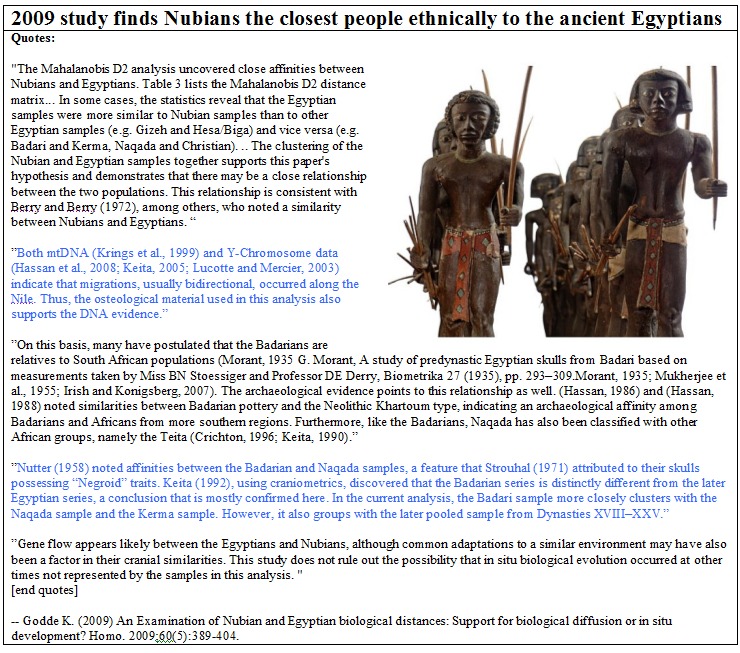


CONFIRMATION THAT THE ANCIENT EGYPTIANS WERE BLACK LIKE THE NUBIANS SINCE PRE-DYNASTIC TIMES. THIS FACT IS IRREFUTABLE!
"Somali, as a representative East African population, seem to have experienced a detectable amount of Caucasoid maternal influence... the proportion m of Caucasoid lineages in the Somali is m = 0.46 [46%]... Our results agree with the hypothesis of a maternal influence of Caucasoid lineages in East Africa, although its contribution seems to be higher than previously reported in mtDNA studies. www.nature.com...
Your quote is very dated for a genetic study and has been superseded by more recent and authoritative studies, which used much wider data samples:
" These studies suggest a recent and primary subdivision between African and non-African populations, high levels of divergence among African populations, and a recent shared common ancestry of non-African populations, from a population originating in Africa. The intermediate position, between African and non-African populations, that the Ethiopian Jews and Somalis occupy in the PCA plot also has been observed in other genetic studies (Ritte et al. 1993; Passarino et al. 1998) and could be due either to shared common ancestry or to recent gene flow. The fact that the Ethiopians and Somalis have a subset of the sub-Saharan African haplotype diversity and that the non-African populations have a subset of the diversity present in Ethiopians and Somalis makes simple-admixture models less likely; rather, these observations support the hypothesis proposed by other nuclear-genetic studies (Tishkoff et al. 1996a, 1998a, 1998b; Kidd et al. 1998) that populations in northeastern Africa may have diverged from those in the rest of sub-Saharan Africa early in the history of modern African populations and that a subset of this northeastern-African population migrated out of Africa and populated the rest of the globe. These conclusions are supported by recent mtDNA analysis (Quintana-Murci et al. 1999)." Tishkoff et al. (2000) Short Tandem-Repeat Polymorphism/Alu Haplotype Variation at the PLAT Locus: Implications for Modern Human Origins. Am J Hum Genet; 67:901-925
You're argument for a non black Egypt is so desperate that you must resort to lableling these black Africans:
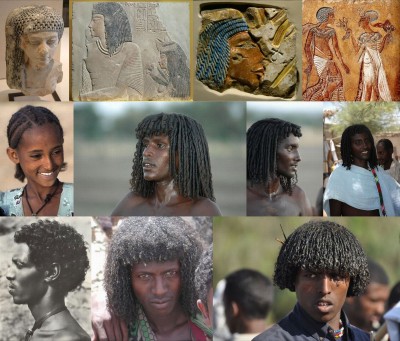
as "Caucasoid" in order to attempt to steal black African history...PATHETIC!
""""Originally posted by LUXUSAs I stated before modern Egyptians are “the closest” genetically to the workforce who built Egypt, not
Nubians as you and your afrocentric friends try to assert…basically its you who are trying to steal history and not others.""""
Not only has your ignorant ass assertion that the phenotype of the earliest ancient Egyptians has remained unchanged throughout Egypt's 5,000 years in which they've endured countless invasions and migrations been DENBUNKED by my PEER REVIEWED studies, but even modern Egyptians know that they are ethnically the same as Nubians, and many if not most (especially in the southern Egypt WHERE THE CIVILIZATION ORIGINATED) identify as black.
EVEN MORE RECENT GENETIC EVIDENCE confirms that the ancient Egyptians and Nubians have been ethnically and genetically the same since Pre-Dynastic times:
Wow so once again Egyptian mythology (meaning passed down to modern Egyptians) confirms their genetic affinities which indicates that their origins came from the black Africans (Nilotic Saharans).
Do you not understand how #ing sad your argument is? As noted by others in the thread you have not addressed a single piece of recent peer reviewed biological or cultural evidence that has been presented to you, which confirm that the origins of the ancient Egyptians came from the south (black Africans). You have ignored the implications of the consistent finding that the earliest ancient Egyptians had a phenotype most like ancient Nubians, Saharans, Ku#es and modern Horn Africans. Hell I'll post it again:
Why are so many scientist cited as also findings this exact same #ing thing? Why are these findings further confirmed by studies within the last three years?
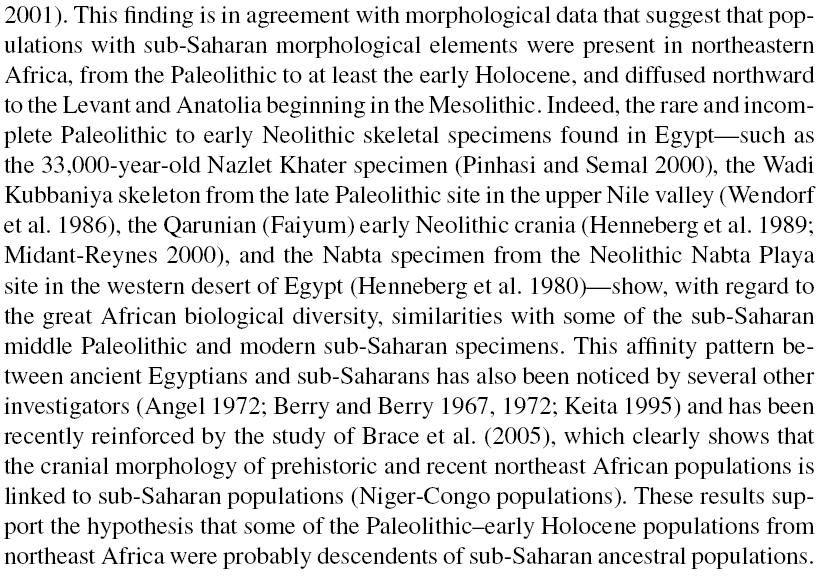
Ricaut 2008
PATHETIC so based on your pseudo scientific racial categorization this East African Horn is not black because her hair is naturally straight.
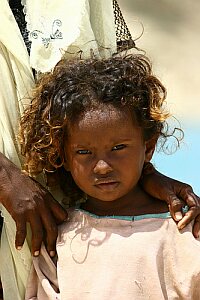
You are aware that straight hair originated IN these African populations aren't you? They are not the product of admixture as almost any anthropologist or geneticist will tell you.
YOU HAVE NOTHING TO DO WITH ANCIENT AFRICA YOUNG LAD! SO HOP OFF OF KEMET'S JOCK!
Not only has your ignorant ass assertion that the phenotype of the earliest ancient Egyptians has remained unchanged throughout Egypt's 5,000 years in which they've endured countless invasions and migrations been DENBUNKED by my PEER REVIEWED studies, but even modern Egyptians know that they are ethnically the same as Nubians, and many if not most (especially in the southern Egypt WHERE THE CIVILIZATION ORIGINATED) identify as black.
EVEN MORE RECENT GENETIC EVIDENCE confirms that the ancient Egyptians and Nubians have been ethnically and genetically the same since Pre-Dynastic times:
"Genetic continuum of the Nubians with their kin in southern Egypt is indicated by comparable frequencies of E-V12 the predominant M78 subclade among southern Egyptians." "The Copt samples displayed a most interesting Y-profile, enough (as much as that of Gaalien in Sudan) to suggest that they actually represent a living record of the peopling of Egypt. The significant frequency of B-M60 in this group might be a relic of a history of colonization of southern Egypt probably by Nilotics in the early state formation, something that conforms both to recorded history and to Egyptian mythology." Source: (Hisham Y. Hassan 1, Peter A. Underhill 2, Luca L. Cavalli-Sforza 2, Muntaser E. Ibrahim 1. (2008). Y-chromosome variation among Sudanese: Restricted gene flow, concordance with language, geography, and history. Am J Phys Anthropology, 2008.)
Wow so once again Egyptian mythology (meaning passed down to modern Egyptians) confirms their genetic affinities which indicates that their origins came from the black Africans (Nilotic Saharans).
I find it really quite amusing that you guys ignore the dna testing of modern Egyptians , preferring to believe this fictitious idea that Nubians are the closest genetically to ancient Egyptians
Do you not understand how #ing sad your argument is? As noted by others in the thread you have not addressed a single piece of recent peer reviewed biological or cultural evidence that has been presented to you, which confirm that the origins of the ancient Egyptians came from the south (black Africans). You have ignored the implications of the consistent finding that the earliest ancient Egyptians had a phenotype most like ancient Nubians, Saharans, Ku#es and modern Horn Africans. Hell I'll post it again:
"Analysis of crania is the traditional approach to assessing ancient population origins, relationships, and diversity. In studies based on anatomical traits and measurements of crania, similarities have been found between Nile Valley crania from 30,000, 20,000 and 12,000 years ago and various African remains from more recent times (see Thoma 1984; Brauer and Rimbach 1990; Angel and Kelley 1986; Keita 1993). Studies of crania from southern predynastic Egypt, from the formative period (4000-3100 B.C.), show them usually to be more similar to the crania of ancient Nubians, Ku#es, Saharans, or modern groups from the Horn of Africa than to those of dynastic northern Egyptians or ancient or modern southern Europeans." (S. O. Y and A.J. Boyce, "The Geographical Origins and Population Relationships of Early Ancient Egyptians", in Egypt in Africa, Theodore Celenko (ed), Indiana University Press, 1996, pp. 20-33)
Why are so many scientist cited as also findings this exact same #ing thing? Why are these findings further confirmed by studies within the last three years?

Ricaut 2008
That photo of that female mummy I posted is actually king tuts grandma btw (confirmed my genetic testing)…. She has Cynotrichous type hair btw
PATHETIC so based on your pseudo scientific racial categorization this East African Horn is not black because her hair is naturally straight.

You are aware that straight hair originated IN these African populations aren't you? They are not the product of admixture as almost any anthropologist or geneticist will tell you.
I wouldn’t invest too much money in pharaoh headdresses and Egyptian style jewellery just yet boys, might find yourself having to sell it on ebay sooner then you think!
YOU HAVE NOTHING TO DO WITH ANCIENT AFRICA YOUNG LAD! SO HOP OFF OF KEMET'S JOCK!
edit on 14-11-2011 by SirShawn because: (no reason given)
reply to post by SirShawn
Could you please stop posting rubbish from afrocentric websites, and please provide a link for those lovely visuals as is required (posting rules).
BTW....do you actually know what peer review means, that last study I posted featured in "Nature" only one of the most prestigious science journals!
Could you please stop posting rubbish from afrocentric websites, and please provide a link for those lovely visuals as is required (posting rules).
BTW....do you actually know what peer review means, that last study I posted featured in "Nature" only one of the most prestigious science journals!
reply to post by LUXUS
bro...im a nubian from egypt.....test my dna....
im the son of menes and taharq.....the first and last pharaoh
you can claim the last few years,,,with persian, greek and romans....
but face it...they were nubians.....FULL STOP
peace
bro...im a nubian from egypt.....test my dna....
im the son of menes and taharq.....the first and last pharaoh
you can claim the last few years,,,with persian, greek and romans....
but face it...they were nubians.....FULL STOP
peace
reply to post by thePharaoh
What ever you say bro
What ever you say bro
professor C.Loring Brace
The biological affinities of the ancient Egyptians were tested against their neighbors and selected prehistoric groups as well as against samples representing the major geographic population clusters of the world. Two dozen craniofacial measurements were taken on each individual used.....
The Predynastic of Upper Egypt and the Late Dynastic of Lower Egypt are more closely related to each other than to any other population. As a whole, they show ties with the European Neolithic, North Africa, modern Europe, and, more remotely, India, but not at all with sub-Saharan Africa, eastern Asia, Oceania, or the New World.
Adjacent people in the Nile valley show similarities in trivial traits in an unbroken series from the delta in the north southward through Nubia and all the way to Somalia at the equator.
..... We conclude that the Egyptians have been in place since back in the Pleistocene and have been largely unaffected by either invasions or migrations. As others have noted, Egyptians are Egyptians, and they were so in the past as well."
edit on 15-11-2011 by LUXUS because: (no reason given)
Originally posted by LUXUS
reply to post by SirShawn
Could you please stop posting rubbish from afrocentric websites, and please provide a link for those lovely visuals as is required (posting rules).
BTW....do you actually know what peer review means, that last study I posted featured in "Nature" only one of the most prestigious science journals!
Referring to peer reviewed research as "Afrocentric" only shows how #ing hopelessly retarded you are. You obviously have no rebuttal to any of the studies that I've posted, so the buzz word "Afrocentric" must have been your last resort.
Secondly never did anyone state that your study was not peer reviewed. What I was pointing out to you was how out of place the bolded statement that you emphasized was in regard to what the vast majority of recent mainstream biological evidence indicates. The statement indicated that the Sub Saharan African component (which was actually a quote from another study within the study cited) of Egypt is recent, which is in direct contradiction to what is generally agreed upon in regards to the origins and spread of M-35
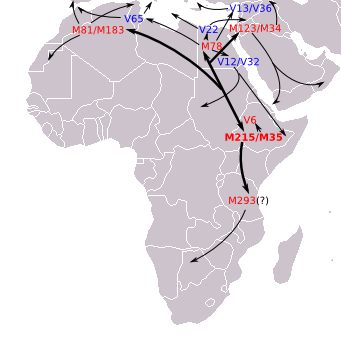
If you can read this map then you can see that the origins of M-35 is in Ethiopia (Sub Saharan East Africa)
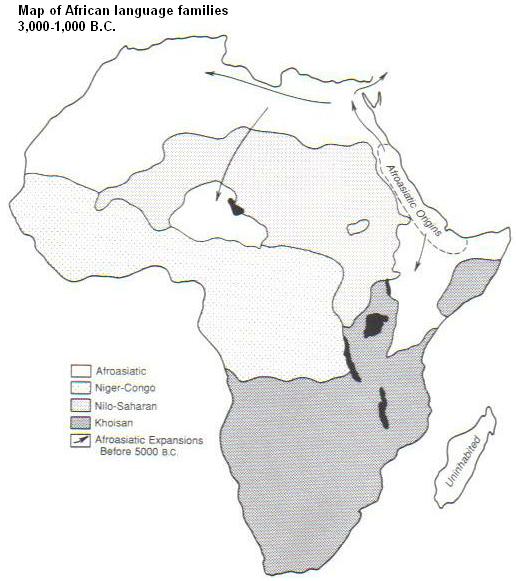
If you can read this map then you can see that the origins and spread of Afro-Asiatic is in the Horn of Africa (Sub Saharan East Africa)
Once again this is the opening statement from UCLA's professor, leading linguist and Chair of African studies Christopher Ehret:
Ancient Egyptian as an African Language, Egypt as an African Culture
Christopher Ehret
Professor of History, African Studies Chair
University of California at Los Angeles
Ancient Egyptian civilization was, in ways and to an extent usually not recognized, fundamentally African. The evidence of both language and culture reveals these African roots.
The origins of Egyptian ethnicity lay in the areas south of Egypt. The ancient Egyptian language belonged to the Afrasian family (also called Afroasiatic or, formerly, Hamito-Semitic). The speakers of the earliest Afrasian languages, according to recent studies, were a set of peoples whose lands between 15,000 and 13,000 B.C. stretched from Nubia in the west to far northern Somalia in the east. They supported themselves by gathering wild grains. The first elements of Egyptian culture were laid down two thousand years later, between 12,000 and 10,000 B.C., when some of these Afrasian communities expanded northward into Egypt, bringing with them a language directly ancestral to ancient Egyptian. They also introduced to Egypt the idea of using wild grains as food.
The ancient Egyptians were black Africans from the south. The evidence is overwhelming!
Originally posted by LUXUS
reply to post by thePharaoh
What ever you say bro
professor C.Loring Brace
The biological affinities of the ancient Egyptians were tested against their neighbors and selected prehistoric groups as well as against samples representing the major geographic population clusters of the world. Two dozen craniofacial measurements were taken on each individual used.....
The Predynastic of Upper Egypt and the Late Dynastic of Lower Egypt are more closely related to each other than to any other population. As a whole, they show ties with the European Neolithic, North Africa, modern Europe, and, more remotely, India, but not at all with sub-Saharan Africa, eastern Asia, Oceania, or the New World.
Adjacent people in the Nile valley show similarities in trivial traits in an unbroken series from the delta in the north southward through Nubia and all the way to Somalia at the equator.
..... We conclude that the Egyptians have been in place since back in the Pleistocene and have been largely unaffected by either invasions or migrations. As others have noted, Egyptians are Egyptians, and they were so in the past as well."
edit on 15-11-2011 by LUXUS because: (no reason given)
Despite the fact that you have been informed that this almost 20 year old study has been thoroughly criticized by other scholars for it's conclusions and is also in direct contradiction to Brace's 2006 study, you ignorantly continue to post the same damn study because it feeds your pathetic white African fantasy. Do you see how pathetic your argument is?
A much more recent study on the other hand has confirmed that their is continuity from Pre-Dynastic (Badarians) to Late Dynastic times, but there is also stark biological distinctions between those sample. Pre-Dynastic Egyptians (who came from more southerly areas as proven above) overlap biologically with Horn Africans and Nubians. Notice also how many different studies are cited for the conclusions of this study (meaning that it is CONSISTENTLY FOUND):
"As a result of their facial prognathism, the Badarian sample has been described as forming a morphological cluster with Nubian, Tigrean, and other southern (or Negroid") groups (Morant, 1935, 1937; Mukherjee et al., 1955; Nutter, 1958, Strouhal, 1971; Angel, 1972; Keita, 1990). Cranial nonmetric trait studies have found this group to be similar to other Egyptians, including much later material (Berry and Berry, 1967, 1972), but also to be significantly different from LPD material (Berry et al., 1967). Similarly, the study of dental nonmetric traits has suggested that the Badarian population is at the centroid of Egyptian dental samples (Irish, 2006), thereby suggesting similarity and hence continuity across Egyptian time periods. From the central location of the Badarian samples in Figure 2, the current study finds the Badarian to be relatively morphologically close to the centroid of all the Egyptian samples. The Badarian have been shown to exhibit greatest morphological similarity with the temporally successive EPD (Table 5). Finally, the biological distinctiveness of the Badarian from other Egyptian samples has also been demonstrated (Tables 6 and 7).
These results suggest that the EDyn do form a distinct morphological pattern. Their overlap with other Egyptian samples (in PC space, Fig. 2) suggests that although their morphology is distinctive, the pattern does overlap with the other time periods. These results therefore do not support the Petrie concept of a "Dynastic race" (Petrie, 1939; Derry, 1956). Instead, the results suggest that the Egyptian state was not the product of mass movement of populations into the Egyptian Nile region, but rather that it was the result of primarily indigenous development combined with prolonged small-scale migration, potentially from trade, military, or other contacts.
This evidence suggests that the process of state formation itself may have been mainly an indigenous process, but that it may have occurred in association with in-migration to the Abydos region of the Nile Valley. This potential in-migration may have occurred particularly during the EDyn and OK. A possible explanation is that the Egyptian state formed through increasing control of trade and raw materials, or due to military actions, potentially associated with the use of the Nile Valley as a corridor for prolonged small scale movements through the desert environment. (Sonia R. Zakrzewski. (2007). Population Continuity or Population Change: Formation of the Ancient Egyptian State. AMERICAN JOURNAL OF PHYSICAL ANTHROPOLOGY 132:501-509)
edit on 16-11-2011 by SirShawn because: (no reason given)
edit on 16-11-2011 by SirShawn because: (no reason
given)
No my friend, Egypt was built by Egyptians who are the same as modern Egyptians. The truth as we all know is blacks never built jack and by the looks
of it never will build jack!
Originally posted by LUXUS
No my friend, Egypt was built by Egyptians who are the same as modern Egyptians. The truth as we all know is blacks never built jack and by the looks of it never will build jack!
im a modern egyptian....im black.
peace
p.s luxus...we can end this now...my dna....versus yours and any other "yellow egyptian"
the "modern" egyptians that you are talking about, are decendants of persians, greeks, romans and arabs. who have controlled NORTHERN egypt since taharaq...2,500 yrs ago.
it seems that you only know about NORTHERN egypt ...cairo and alexandria.
look at...luxor, abydos, karnack, valley of the kings, thebes, and look at the MODERN people who live there...they are nubians
to settle this....look at kom ombo...look at its location...its a modern nubian city
my fathers village, is where lake nasser now is....the lake formed after nasser built the aswan dam.
so here we have modern egypt, building a dam, to remove thew last trace nubians from egypt...failed though.
edit on 17-11-2011 by thePharaoh because: (no reason given)
Originally posted by LUXUS
No my friend, Egypt was built by Egyptians who are the same as modern Egyptians. The truth as we all know is blacks never built jack and by the looks of it never will build jack!
Behold the true motive for the ignorance spoken from this dumb Neanderthal racist punk ass cracker! Dumb bitch do your homework, southern Egyptians are still black and are much closer to their original ancestors than admixed Northern Egyptians (as stated by the southern Egyptian man in the youtube posted earlier). They were originally black and every #ing body knows it, but only racist ass crackers like yourself are dumb enough to actually argue against it. Now you look like a #ing dumb ass... congratulations.
reply to post by thePharaoh
Ok Pharaoh, send your DNA here: www.igenea.com...
And no I don't want to know the results, would be good for you to finally know though
Ok Pharaoh, send your DNA here: www.igenea.com...
And no I don't want to know the results, would be good for you to finally know though
edit on 17-11-2011 by LUXUS because: (no reason given)
Just a side question
If someone has a white and black parent do you consider them black or white?
1. Now their child has a child who is 1/4
2. Now their child has a child who is 1/8
3. Now their child has a child who is 1/16
4. Now their child has a child who is 1/32
5. Now their child has a child who is 1/64
6. w their child has a child who is 1/128
You'll note I did't state what 'race' this percentage is because it is unimportant. The question is; at what point is the minority race no longer considered the 'race' of the progeny?
If someone has a white and black parent do you consider them black or white?
1. Now their child has a child who is 1/4
2. Now their child has a child who is 1/8
3. Now their child has a child who is 1/16
4. Now their child has a child who is 1/32
5. Now their child has a child who is 1/64
6. w their child has a child who is 1/128
You'll note I did't state what 'race' this percentage is because it is unimportant. The question is; at what point is the minority race no longer considered the 'race' of the progeny?
reply to post by LUXUS
www.livescience.com...
Of course you tell thePharaoh to use the iGENEA website, so typical.
But people hoping to prove that they've got an ancestor in common with the notoriously sickly boy king should take iGENEA's claims with a grain of salt, Pusch said: "It appears that they try to better sell their DNA testing kit by using the media attention connected to King Tut."
www.livescience.com...
Of course you tell thePharaoh to use the iGENEA website, so typical.
why does it matter if they were black or not??
if you look at the art and the depictions, you can clearly see it was a mixed society... kinda like today. sometimes their art looks like they are brown like arabs and other times very dark like blacks.
has anyone actually followed the art by era to see how it changed through out time. that is exactly what i have always thought but I really do not have a hard on to know.
if you dna test a corpse that was mixed by many generations what would it show up as?? YOu have to look at taht aspect to.
but does it really matter?? or is this a peen issue?
if you look at the art and the depictions, you can clearly see it was a mixed society... kinda like today. sometimes their art looks like they are brown like arabs and other times very dark like blacks.
has anyone actually followed the art by era to see how it changed through out time. that is exactly what i have always thought but I really do not have a hard on to know.
if you dna test a corpse that was mixed by many generations what would it show up as?? YOu have to look at taht aspect to.
but does it really matter?? or is this a peen issue?
edit on 17-11-2011 by yaluk because: (no reason given)
Originally posted by LUXUS
reply to post by thePharaoh
Ok Pharaoh, send your DNA here: www.igenea.com...
And no I don't want to know the results, would be good for you to finally know though
edit on 17-11-2011 by LUXUS because: (no reason given)
lol...darn skippy..!!
though i realise that they are tracing it through the males...but the pharaonic lineage was a maitrachy!!
either way...i want my dna tested
peace
new topics
-
Watch SpaceX Starship Test Flight 6 Live - Launch Starts 4pm CST , 2200 GMT.
Space Exploration: 58 minutes ago -
Watch Dramatic Moment Ukrainian Nursery Teacher Takes Out Russian Missile With Rocket Launcher
Mainstream News: 1 hours ago -
He Had and It Has
Short Stories: 5 hours ago -
Morning’s Reverie
Short Stories: 8 hours ago -
Democrat county officials openly declare intention to commit ballot fraud in PA
2024 Elections: 11 hours ago
top topics
-
DefCon Teetering on Escalation
World War Three: 14 hours ago, 27 flags -
Whistleblower warns FBI can’t be trusted with background checks for Trump’s nominees
Whistle Blowers and Leaked Documents: 17 hours ago, 17 flags -
Democrat county officials openly declare intention to commit ballot fraud in PA
2024 Elections: 11 hours ago, 12 flags -
What is your most awesome achievement or proudest moment, RE: something you were responsible for?
General Chit Chat: 16 hours ago, 9 flags -
Morning’s Reverie
Short Stories: 8 hours ago, 3 flags -
He Had and It Has
Short Stories: 5 hours ago, 2 flags -
Watch SpaceX Starship Test Flight 6 Live - Launch Starts 4pm CST , 2200 GMT.
Space Exploration: 58 minutes ago, 2 flags -
Watch Dramatic Moment Ukrainian Nursery Teacher Takes Out Russian Missile With Rocket Launcher
Mainstream News: 1 hours ago, 1 flags
active topics
-
DefCon Teetering on Escalation
World War Three • 30 • : ADVISOR -
The Acronym Game .. Pt.4
General Chit Chat • 973 • : Encia22 -
-@TH3WH17ERABB17- -Q- ---TIME TO SHOW THE WORLD--- -Part- --44--
Dissecting Disinformation • 3303 • : RelSciHistItSufi -
Watch Dramatic Moment Ukrainian Nursery Teacher Takes Out Russian Missile With Rocket Launcher
Mainstream News • 4 • : McUrnsalso -
He Had and It Has
Short Stories • 2 • : nugget1 -
Watch SpaceX Starship Test Flight 6 Live - Launch Starts 4pm CST , 2200 GMT.
Space Exploration • 0 • : gortex -
What is your most awesome achievement or proudest moment, RE: something you were responsible for?
General Chit Chat • 19 • : AlroyFarms -
WATCH LIVE: US Congress hearing on UFOs, unidentified anomalous phenomena
Aliens and UFOs • 131 • : Lazy88 -
Whistleblower warns FBI can’t be trusted with background checks for Trump’s nominees
Whistle Blowers and Leaked Documents • 9 • : billxam1 -
Mood Music Part VI
Music • 3705 • : BrucellaOrchitis
